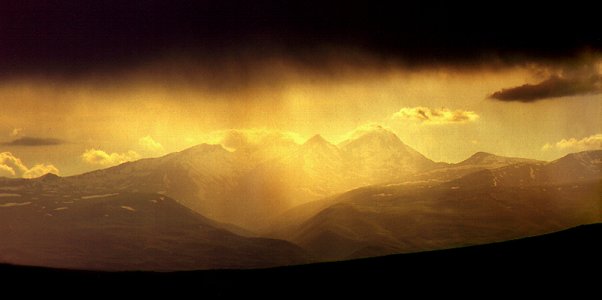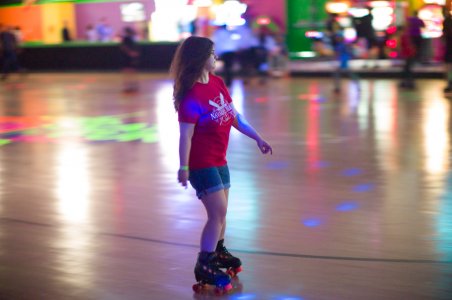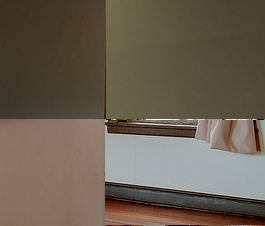Freakscene
Obscure member
Thanks for the heads-up on that one. I do not foresee a need as I have the upgraded Leica sensor/circuit board, but it is nice to know.
I wonder why Jadon stopped the service? The posts he had of the sensor he modded look pretty good to me.
My guess...high cost and risk. I suppose that many M9/ME owners -like myself, opted to trade their disabled cameras, instead. Cheers, OtL
It’s not too risky, but it’s s l o w. With a small team I’ve now done several, and it takes a g e s.
And every now and then one has some slightly different hardware and won’t let you flash the new firmware in easily. And without the new firmware the colour (M9) or tonality (MM) is off.
And sometimes the new sensor cover is the wrong thickness, but just by a minute amount. Especially if you’re using the inexpensive pre-cut covers available online. But it still needs to be trashed and replaced If it is the wrong thickness.
And sometimes the old glue won’t let go, and you have to grind the old cover off under vacuum.
And if you get dust under the new coverglass you can’t remove it without removing the cover and putting a new one on.
And on and on.
I would say anything under $US2K is a rush job, and they definitely aren’t changing the firmware for you.
Last edited:
boojum
Mentor
It’s not too risky, but it’s s l o w. With a small team I’ve now done several, and it takes a g e s.
And every now and then one has some slightly different hardware and won’t let you flash the new firmware in easily. And without the new firmware the colour (M9) or tonality (MM) is off.
And sometimes the new sensor cover is the wrong thickness, but just by a minute amount. Especially if you’re using the inexpensive pre-cut covers available online. But it still needs to be trashed and replaced If it is the wrong thickness.
And sometimes the old glue won’t let go, and you have to grind the old cover off under vacuum.
And if you get dust under the new coverglass you can’t remove it without removing the cover and putting a new one on.
And on and on.
I would say anything under $US2K is a rush job, and they definitely aren’t changing the firmware for you.
Makes me glad I got one with a new sensor, the Leica one with the circuit board. As for the thread question, WWYD?, it depends upon how much you like the color, definition and "look" of the M-9. This is an individual decision. I like it. I paid a slight premium for my upgraded M-9 when I bought it. It was advertised as having the Leica sensor and board and the "button dance" reveals this to be true, thankfully. In my eyes it's a great camera.
Archiver
Mentor
I would find a low mileage M9 with new sensor. I will use mine for as long as it lasts, it is my favourite camera of all time because of the colours and the way images pop, not to mention the ergonomics/handling. The M10 and M11 feel great but their images don't make go holy crackers! when I open them in Lightroom.
Freakscene
Obscure member
And the best of all, which I forgot above: the M9 series cameras have cast frames, and then they use shims to calibrate the spatial relationship between the casting and the sensor. So if anything changes even a tiny but while you’re replacing the sensor, you’ll never get it flat. Ever. Hello to a world of perpetual decentering.
boojum
Mentor
And the best of all, which I forgot above: the M9 series cameras have cast frames, and then they use shims to calibrate the spatial relationship between the casting and the sensor. So if anything changes even a tiny but while you’re replacing the sensor, you’ll never get it flat. Ever. Hello to a world of perpetual decentering.
This kind of thing is a reason I have such mixed feelings about Leica. Every camera has its drawbacks but these puppies do seem weird, and still there is a cultish following. Granted, I really like the ones I have. The ergonomics, the image and available lenses are marvelous. But stories like this make my mind reel. OTOH the Pixii is all electronic other than the RF. And it has teething problems, still. In their defence it is a small group who are running the show. And when it works, most of the time, it gives up a good image.
Let's face it, they all have problems. Name your poison.
In addition to changing the Cover Glass to BG-55 from S8612, the color dye used in the KAF-18500 also changed. This was to get the color as close as possible to the original. Kolari and others cannot do this. I'm glad to have new CCD's in my M Monochrom and M9, this is the last generation of CCD consumer cameras that will ever be made.
wlewisiii
Just another hotel clerk
Must be my iffy color vision, but while I understand intellectually they attraction of the CCDs I fail to see anything special in the images. But as I said, my color vision is a bit marginal - I wasn't able to qualify for for flight training, for example but it wasn't bad enough to keep me out of the military over all. Red/green can cause me some confusion if I am non careful (those damn numbers hiding in the dot patterns  )
)
The color output of the Kodak CCD's was designed to mimic Kodachrome. If you like Kodachrome, you like the output from the M9.
wlewisiii
Just another hotel clerk
That description helps. I do find I use a Velvia emulation a lot these days as it looks more "right" to my odd eyes.
brusby
Well-known
Having things set up perfectly is no doubt best, but just to put things in perspective, generations of photographers were able to make wonderful photos with "perpetually decenter[ed]" cameras -- think of every folder, every view camera and every camera that has a lens mounted on a moveable lens board. It was likely the exception rather than the rule that the film plane was in the precise optimum position, but that didn't prevent great photos from being made with those cameras.
M9 is capable of terrific images, although having one is no guarantee of good results. There are tons of horrific M9 images floating around. But in the right hands it can be special.
A fellow named Carsten in Germany has some nice M9 work posted on his Flickr page. He has removed many of his older and often his best images but it might still be worth a look for anyone interested in the topic. I don't know if it's permitted to post links to someone else's images but if it's not, feel free to remove them or this post.
 Woodscape, Mariazell by Carsten, on Flickr
Woodscape, Mariazell by Carsten, on Flickr
 L1018462 by Carsten, on Flickr
L1018462 by Carsten, on Flickr
M9 is capable of terrific images, although having one is no guarantee of good results. There are tons of horrific M9 images floating around. But in the right hands it can be special.
A fellow named Carsten in Germany has some nice M9 work posted on his Flickr page. He has removed many of his older and often his best images but it might still be worth a look for anyone interested in the topic. I don't know if it's permitted to post links to someone else's images but if it's not, feel free to remove them or this post.
 Woodscape, Mariazell by Carsten, on Flickr
Woodscape, Mariazell by Carsten, on Flickr L1018462 by Carsten, on Flickr
L1018462 by Carsten, on Flickr
Last edited:
Freakscene
Obscure member
One of several problems with decentering on a digital camera as opposed to a film folder is the ‘Italian flag effect’. One side of the digital photo goes red, the other green, the middle is roughly colour correct. It is extremely difficult to fix, and very, very obvious. A decentred folder just makes soft photos, which can be pretty nice. I’d take an old folder with slide film over an M9 with a misaligned sensor any day.

Mount Aragats, Armenia. Leica M9, 75 Summicron.

Bigon, Myanmar. Leica M9, 75 Summicron.

Mount Aragats, Armenia. Leica M9, 75 Summicron.

Bigon, Myanmar. Leica M9, 75 Summicron.
Benjamin Marks
Mentor
Put me in the "never could tell" camp in terms of CCD vs. CMOS -- I shoot in RAW and make moderately extensive modifications to the files that are keepers. Usually not to the colors, but I tend to convert to BW in SilverFX as I "see" in B&W as a default. But I have been happy enough with my M9 to go the Kolari replacement route and so far so good. Price was not cheap, but certainly a great deal less than buying in to the "new" models. It is pointless to complain about it, but Leica's current pricing model does not work well with the upgrade cycle of the digital age -- at least not for me -- and my next camera will probably be a Z9 or equivalent. This is not because of any color rendering -- it is because I have 30 years worth of lenses (Nikon, Pentax, Konica, Lecia M, Leica R and so on) and that looks like one platform that could work for all (One Sensor to Rule them All . . . etc. etc.).
I'll probably get a Nikon Zf for my next new camera, I want to see results from the pixel-shift method of providing color information for all pixels. This is a good alternative to a dedicated monochrome sensor. I can focus the Z5 using focus peaking as quickly as using my RF on the M9 and M Monochrom.
BUT- I will use those two cameras until they can no longer be repaired.

7Art 75/1.25, wide-open on the M9. ISO 2500, 1/45sec.
No viewfinder blackout. I can pan with the moving subject.
BUT- I will use those two cameras until they can no longer be repaired.

7Art 75/1.25, wide-open on the M9. ISO 2500, 1/45sec.
No viewfinder blackout. I can pan with the moving subject.
JeffS7444
Well-known
Changing the sensor glass to M8-type will change the look of the images, because the M8 had only partial UV+IR filtering, and this caused some dark fabrics to look distinctly magenta, and that's not easy to correct in post.
As for CCD magic and film-like output (shrug) beats me what people are talking about. Transparency film has limited dynamic range, and I would not care to have my digital cameras replicate it, except as some sort of "film simulation mode"!
Regardless of whether you get the camera repaired, or buy a newer model equipped with CMOS sensor, the output is likely to look somewhat different, and you may need to tweak your post processing technique a bit to achieve similar results as previously.
As for CCD magic and film-like output (shrug) beats me what people are talking about. Transparency film has limited dynamic range, and I would not care to have my digital cameras replicate it, except as some sort of "film simulation mode"!
Regardless of whether you get the camera repaired, or buy a newer model equipped with CMOS sensor, the output is likely to look somewhat different, and you may need to tweak your post processing technique a bit to achieve similar results as previously.
Kolari is using glass that blocks IR as well as S8612.
MAXMAX is using a cover glass that is close to the M8, which has a 5% IR leakage. Combined with a UV/IR cut filter (Hot Mirror), the M8 blocks more than the M9 and M240.
MAXMAX is using a cover glass that is close to the M8, which has a 5% IR leakage. Combined with a UV/IR cut filter (Hot Mirror), the M8 blocks more than the M9 and M240.
brusby
Well-known
One of several problems with decentering on a digital camera as opposed to a film folder is the ‘Italian flag effect’. One side of the digital photo goes red, the other green, the middle is roughly colour correct. It is extremely difficult to fix, and very, very obvious. A decentred folder just makes soft photos, which can be pretty nice. I’d take an old folder with slide film over an M9 with a misaligned sensor any day.
I regularly use Canon tilt-shift lenses for architectural work. The effective de-centering that results from that amount of tilting and/or shifting is generally significantly greater by several orders of magnitude than what one would encounter in the poorly shimmed sensor example you referenced. But in many years of doing this, I don't recall having encountered the Italian flag effect -- at least to any significant degree where corrective action was required. Perhaps I've just been extremely fortunate. But in my experience it's just not been a significant problem in real world use.
 _MG_3478 - 0 by Brusby, on Flickr
_MG_3478 - 0 by Brusby, on Flickr Misha 2017-08-050766 - 2024 - 5 by Brusby, on Flickr
Misha 2017-08-050766 - 2024 - 5 by Brusby, on Flickr
Last edited:
Coldkennels
Barnack-toting Brit.
Erm... I don't know if it's the lighting or my eyes, but I can very clearly see that both of these photos are more red on the left and more green on the right:I regularly use Canon tilt-shift lenses for architectural work. The effective de-centering that results from that amount of tilting and/or shifting is generally significantly greater by several orders of magnitude than what one would encounter in the poorly shimmed sensor example you referenced. But in many years of doing this, I don't recall having encountered the Italian flag effect -- at least to any significant degree where corrective action was required. Perhaps I've just been extremely fortunate. But in my experience it's just not been a significant problem in real world use.
_MG_3478 - 0 by Brusby, on Flickr
Misha 2017-08-050766 - 2024 - 5 by Brusby, on Flickr

It's more obvious on the one of two pianos as I'd expect the colour of that paint to be the same the whole way around. But like I said, it could just be the lighting.
brusby
Well-known
It's all existing light with a mixture of daylight, incandescent and God-only-knows how many different types of LEDs and equipment lights as found in that working recording studio. There are very apparent green and other odd color casts all over the place from the LEDs. If you've ever tried to do photos in that kind of environment with so many different light sources, you'd know it's impossible to get complete uniformity of color across the frame. But what I didn't find when editing the photos was a sensor related pattern. I suppose that's not apparent to everyone.
Last edited:
brusby
Well-known
Figured I'd give a quick explanation of the main color casts in case anyone is puzzled. In the last photo of the main studio with the two pianos, the light coming in the large windows on the two opposing walls is daylight and therefor blueish in color compared to the incandescents. As a result the wall nearest and surrounding those windows has taken on a cooler, blueish tint. Higher up that same wall, the predominant light sources are the warmer incandescents in the wall sconces and chandeliers. So, the upper walls and ceiling are warmer, more yellow/orange in color.
Shadows always seem to pick up any odd low level colors like the green tints from the LEDs due to the logarithmic way we perceive light.
Shadows always seem to pick up any odd low level colors like the green tints from the LEDs due to the logarithmic way we perceive light.
Mackinaw
Think Different
Most of this discussion is well beyond me, but I do understand what you're referring to. I frequently photograph art at our local Art Gallery, and trying to get accurate colors when you're dealing with a mix of daylight, LED, fluorescent and tungsten is quite the challenge. But after I run everything through Photoshop, the Gallery and the artists are always happy.It's all existing light with a mixture of daylight, incandescent and God-only-knows how many different types of LEDs and equipment lights as found in that working recording studio. There are very apparent green and other odd color casts all over the place from the LEDs. If you've ever tried to do photos in that kind of environment with so many different light sources, you'd know it's impossible to get complete uniformity of color across the frame.....
Jim B.
Share:
-
This site uses cookies to help personalise content, tailor your experience and to keep you logged in if you register.
By continuing to use this site, you are consenting to our use of cookies.

